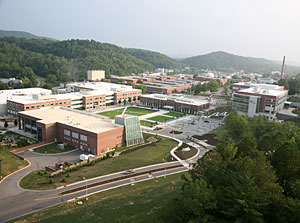Reflecting the rapidly growing interest in sustainable design and construction technologies, the U.S. Department of Energy has announced new funding to support research on net-zero energy buildings.

In November, the agency awarded $20.2 million to the Oak Ridge National Laboratory (ORNL), which is managed by the University of Tennessee and the nonprofit corporation Battelle, and $15.9 million to the Lawrence Berkeley National Laboratory, managed by the University of California. The money is part of $104.7 million in American Recovery and Reinvestment Act funds that the energy department is spending on a range of new facilities at national laboratories.
ORNL will use the money to expand its existing Building Technologies Research and Integration Center, which has equipment for testing sections of roof and wall systems for energy efficiency. It also will build two three-story structures—one with a metal frame, the other made of reinforced concrete—for testing larger scale commercial building envelopes, which it hadn’t done before. “We’re going to be doing the same kind of work, but with different types of facades for commercial structures,” says Jeff Christian, ORNL senior scientist.
Berkeley Lab plans to use the funds to construct a new facility to research net-zero energy buildings. While the lab currently tests building products, “with this new facility, we’re scaling up to full building systems,” explains Stephen Selkowitz, head of the Building Technologies Department in the lab’s Environmental Energy Technologies Division. Plans are still being finalized, but the project is expected to consist of a series of structures, either standalone or within existing buildings on campus, for researching HVAC systems, facade systems, lighting and interiors, skylights, and building sensors and controls. The centerpiece will be a set of three 5,000-square-foot structures where these different systems can be tested together.
Both Christian and Selkowitz say that the labs are coordinating their efforts to prevent overlap and maximize results. And both expect that the new facilities will attract private sector research partners and other interested parties. “This is a facility that’s ultimately designed to have impacts on practice and products,” says Selkowitz.

Post a comment to this article
Report Abusive Comment